Norway maple leaf with tar spot
Image credit: Leslie J. Mehrhoff
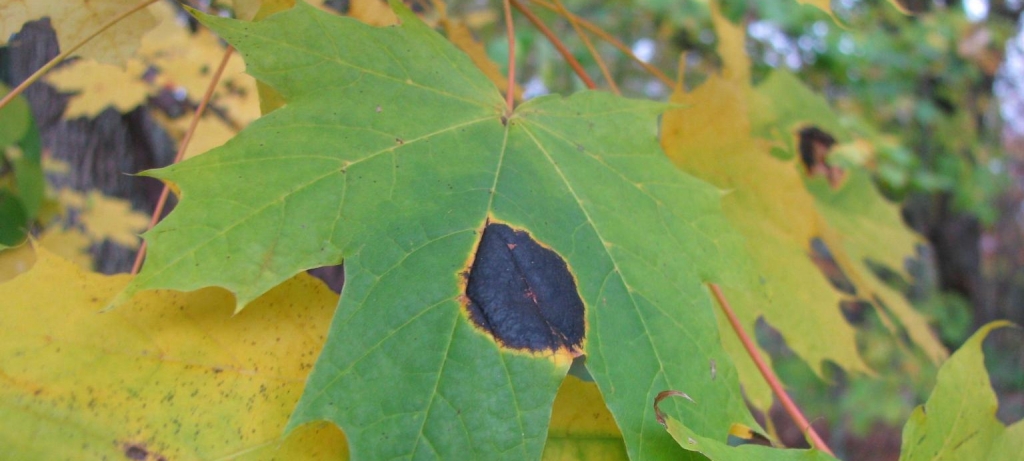
Norway maple leaf with tar spot
Image credit: Leslie J. Mehrhoff
Norway maple, a tree species from the soapberry family, Sapindaceae, is a woody invasive species that can outcompete other native tree species due to its dense canopy, rapid growth, and prolific seed production. Common identifying characteristics include:
Note: Many ornamental varieties of Norway maple exist, including one known as crimson maple, or crimson king maple. These maples have dark red or purple leaves all year long, but in most cases their offspring lose this trait and end up having green leaves. This can make it hard to recognize the spread of this invasive, as the offspring closely resemble native maples. Another way to identify this species is by breaking the petiole (leaf stem) as it contains a milky substance.
For more information visit Woody Invasives of the Great Lakes (WIGL) Collaborative and Midwest Invasive Species Information Network (MISIN).
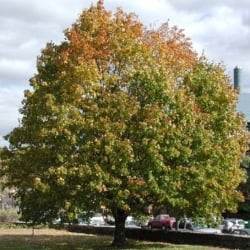
Norway maple full tree
Image credit: Leslie J. Mehrhoff
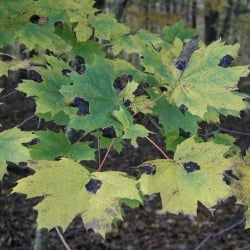
Norway maple leaves with tar spots
Image credit: Leslie J. Mehrhoff
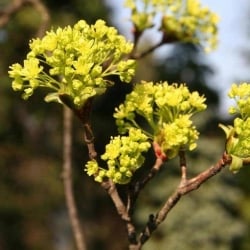
Norway maple flower clusters
Image credit: Robert Vidéki
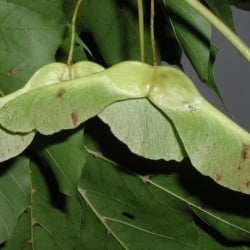
Norway maple samaras (seed pods)
Image credit: Leslie J. Mehrhoff
Norway maple is difficult to remove for its ability to produce large amounts of seedlings and dominate the understory. It was also widely spread by humans as an ornamental in the past, before it was categorized as an invasive species, meaning it can still be found in many yards. The best time to remove Norway maple is when they are saplings or before they’re able to produce seeds if they are mature.
For saplings:
For mature plants, girdling is the most effective strategy. Girdling is the act of cutting deeply into the bark around the trunk, normally in a ring shape, that leads to the death of plant material above the girdled part.
To replace Norway maple, there are many native species of maple that can be planted instead, such as red maple (Acer rubrum) and sugar maple (Acer saccharum). There are also many native understory tree species like hawthorn (Crataegus spp.) and serviceberry (Amelanchier spp.) that would be great alternatives.